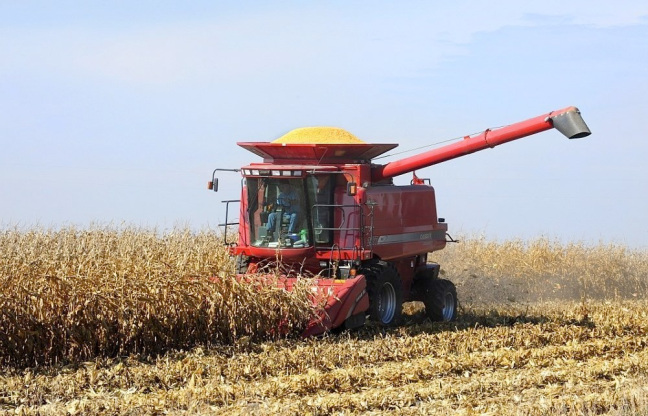
Wet conditions, variable grain quality and storage capacity are some of the factors that will influence the 2016 harvest. Larger image.
AMES, Iowa – As farmers prepare to fire up combines and hit the fields, the following faculty at Iowa State University are available to comment on the trends and storylines that will shape this year’s harvest:
Chad Hart, associate professor of economics and grain markets specialist
Hart pointed to recently released estimates from the U.S. Department of Agriculture predicting record corn and soybean harvests this year as a sign that bloated global supplies will continue to keep commodity prices low. USDA expects a nationwide corn harvest of about 15 billion bushels and a soybean crop of about 4.2 billion bushels.
“The big storyline for this year’s harvest is the sheer size of these crops,” Hart said. “Supplies are going to be bringing down prices throughout the rest of the year.”
Hart said demand for grain in some sectors, such as the ethanol and livestock industries, has strengthened, offering producers some cause for optimism. In addition, the low commodity prices have made U.S. grain more competitive on the global market.
But those factors won’t be enough to turn prices around in the face of the overwhelmingly large supply that resulted from several years of large harvests, he said.
“There’s strong demand for the crops right now,” Hart said. “It’s just not strong enough to overcome supply.”
Charles Hurburgh, professor of agricultural and biosystems engineering
Hurbugh said producers will face challenges on several fronts during this year’s harvest.
Alternating periods of precipitation and high humidity across the state have created favorable conditions for high moisture and mold in the crop, which means grain quality will vary for many producers, he said.
“The longer we go with rain and humidity and these poor drying conditions, the more important it is for farmers to get their crop out of the field and into rapid drying,” he said.
Farmers may also face difficulty finding space to store their crops, he said. Hurburgh said the state of Iowa’s permanent grain storage capacity may fall short by around a billion bushels this year due to the large harvests from each of the last several years carrying over. That means grain elevators and some ethanol plants likely will make use of temporary measures to store grain for a few months following this year’s harvest, which could create slowdowns at grain receiving points.
“There are going to be some management challenges this year with drying and cooling the crop quickly and then storing it,” Hurburgh said. “It’s not a crisis, but it’s going to require some planning on the part of producers and grain handlers.”
Mark Licht, assistant professor of agronomy
Licht said he expects the corn and soybean crops hauled in by Iowa farmers to show some variability in grain quality and yields. Differences in planting times and hot weather in June mean some sections of the state will fare better than others.
“There’s going to be some really good crop out there but also some low-yielding crop,” Licht said. “Variability could be pretty high across the state depending on when acres got planted and what sort of maturity farmers are seeing.”
Flooding in parts of northeast Iowa may have exposed the crops to water and resulted in adulterated grain, he said. Farmers harvesting in wet conditions should try to avoid excessive soil compaction from the use of heavy machinery, he said.
Compacted soil may obstruct root growth and plant development for crops in subsequent growing seasons, Licht said.
Elwynn Taylor, professor of agronomy
Taylor, who studies weather and climate, said most of the state has enough moisture in the soil that a heavy rainfall could result in an extended wet period that could make it difficult to operate machinery in the fields. But extended forecasts look clear enough that many locations in Iowa should experience satisfactory harvest conditions, he said.
An El Nino system, or a band of warm water in the central Pacific Ocean, emerged at the end of 2015 and extended into August, when it started to dissipate. Taylor said that dissipation opens the door for La Nina, or a cooling of water in the Pacific Ocean, late this year or early 2017.
Although too late to impact this year’s crop, a La Nina could influence yields in the Midwest next year by leading to drought conditions, Taylor said.
“We expect a shift into La Nina before winter’s over,” he said. “Historically, we see a 70 percent chance of below-trend yields during La Nina years.”